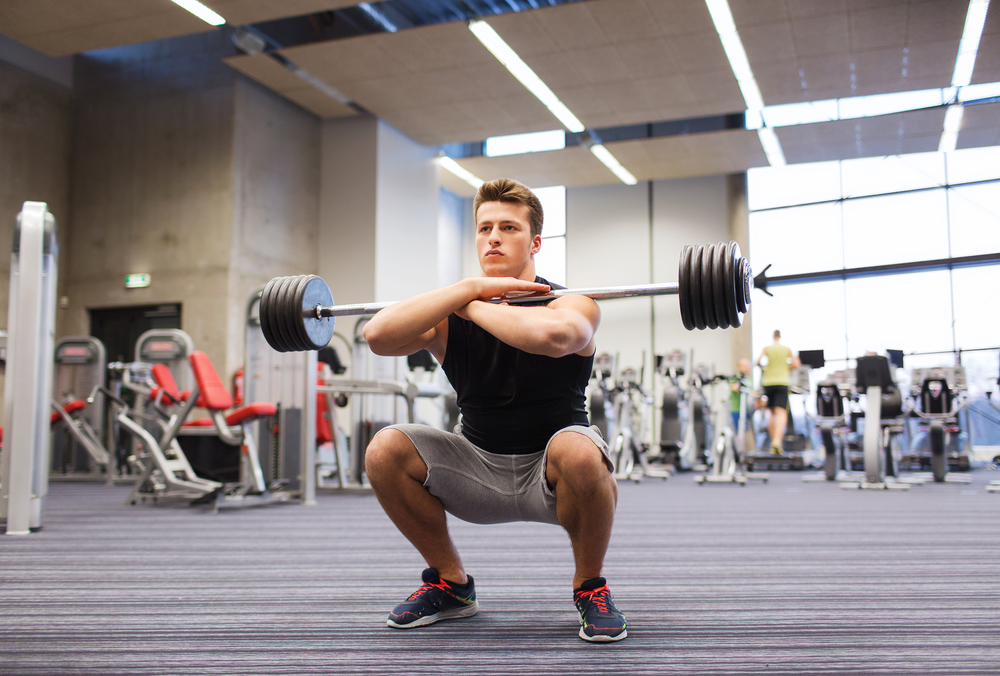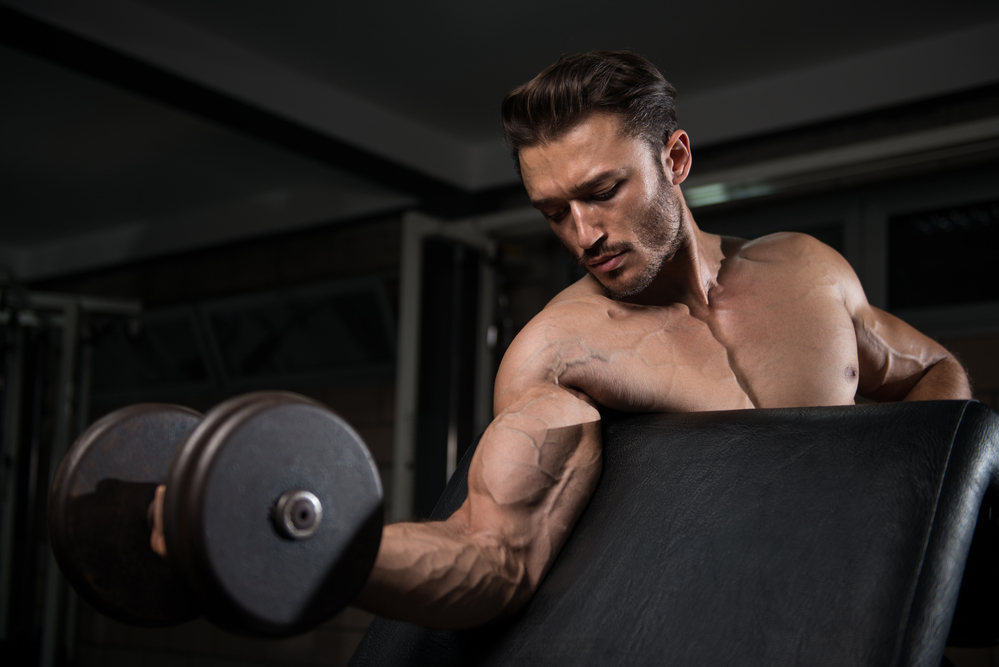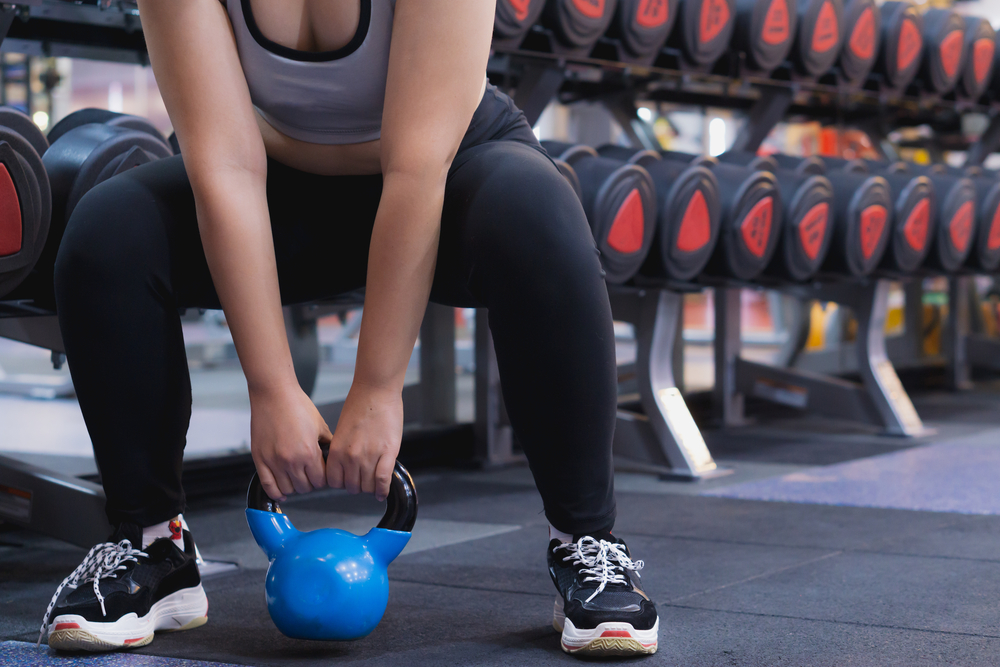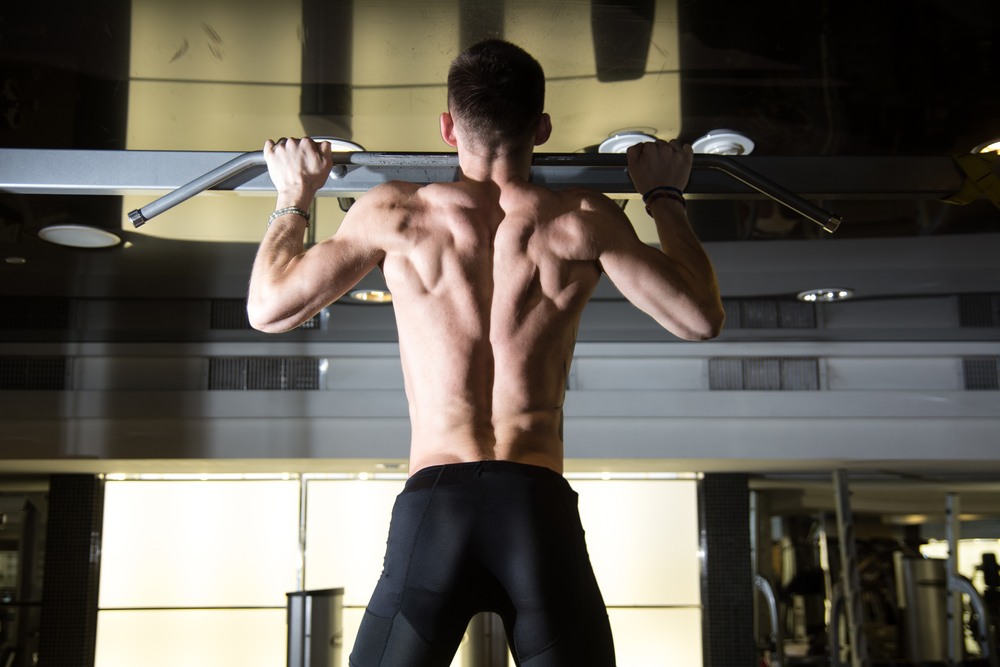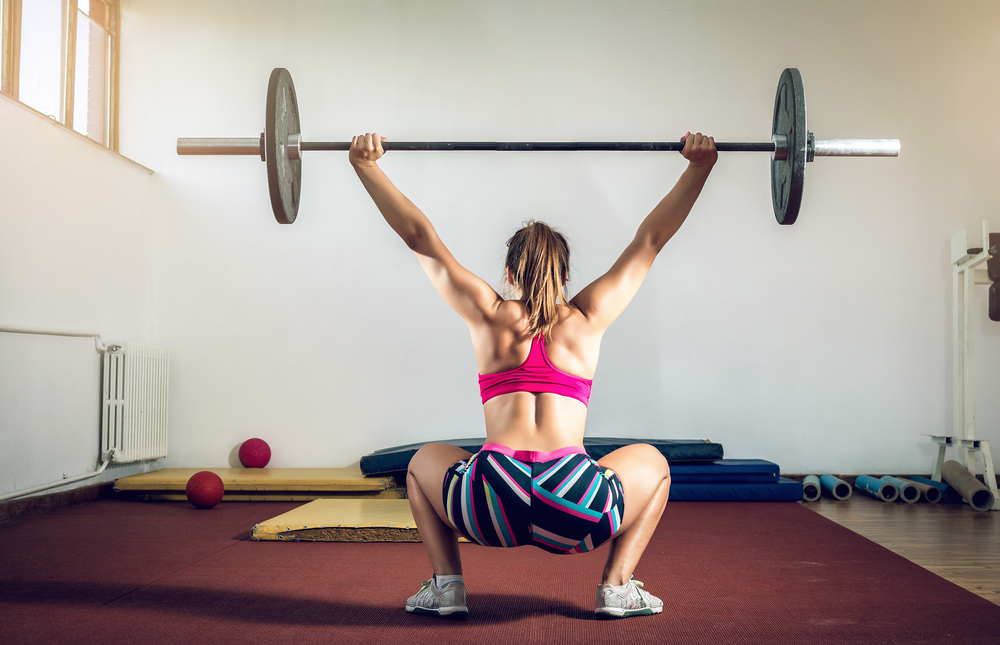
The overhead squat is a functional exercise that came to fitness from weightlifting. The peculiarity of the exercise is that it affects almost all the muscles of the body, comprehensively improving muscle strength, flexibility, and coordination.
Purpose of the exercise
The overhead squat is a complex movement that simultaneously engages several large muscle groups.
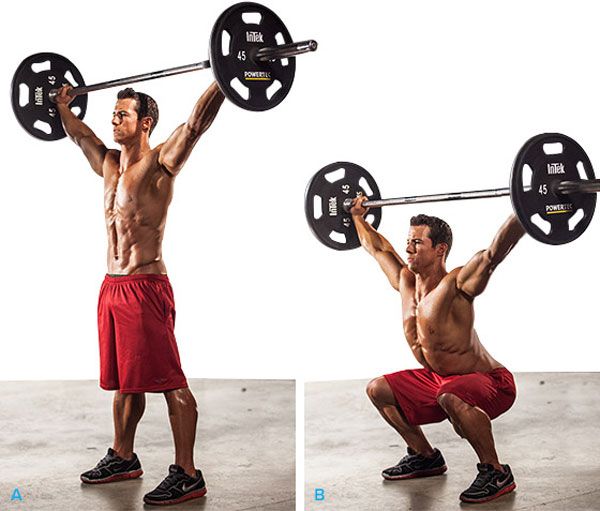
The exercise, like the classic barbell squat, effectively develops the strength and volume of the leg muscles, strengthens and stabilizes the lower back
Due to the location of the bar above the head, the muscles of the body stabilizers are significantly involved in the work. The exercise is ideal for developing squatting techniques. It is no secret that the correct squat technique implies a certain position of the body. Overhead squats literally force you to stabilize the centerline of your body. The slightest deviation from it will not allow you to complete the exercise. As you do the overhead squat, you simultaneously develop the technical base for the classic squat and other exercises
In addition to the lower body, lower back, and stabilizer muscles, the shoulder muscles are also loaded
After several months of squats, athletes notice changes in volume and strength. Working weight increases in both leg exercises and upper body movements.
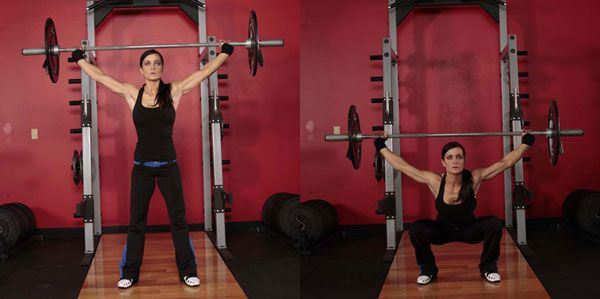
Overhead squats have several features, including:
It’s better to refrain from doing the exercise if you have joint problems or spinal diseases.
Exercise technique
How to do the overhead squat?
https://www.youtube.com/watch?v=pn8mqlG0nkE
You can use these squats as a standalone workout or incorporate them into a comprehensive leg workout. The exercise replaces the regular barbell squats.
How to avoid mistakes
As you already understood, the overhead squat is not the easiest exercise. For it to be effective and safe, you need the perfect technique.
Consider these points when you start training. These tips will help you correct possible errors and inaccuracies:
Remember to warm up. Weighted squats put a tremendous amount of stress on your lower body and lower back, so you need to warm up your muscles and joints before exercising. Perform knee lifts, jumps, and body turns for a few minutes. It’ll prepare your body and make your workout more productive and safer
The centerline plays an important role, that is, the position of your body during the exercise. For better stability and coordination, keep your back straight and look forward
Don’t be afraid to increase the weight you are working with. If you have minimal athletic experience, start training with lightweights, such as a bar. Small weights allow you to do the exercise with the wrong technique. You will calmly squat with a light body bar, in whatever position you hold it. But with a barbell, such a trick will no longer work. In other words, if you start exercising without weight, there is a risk that you will have to retrain to do the exercise in the future
Do not hurry. Instead, take a few seconds to adjust the position of the barbell. It is also worth making sure that you are standing on a full foot, and that bodyweight is redistributed to the heels. It’ll help you maintain balance without losing control of the bar. When you are sure everything is correct, tighten the muscles of your thighs and buttocks and jerk upward
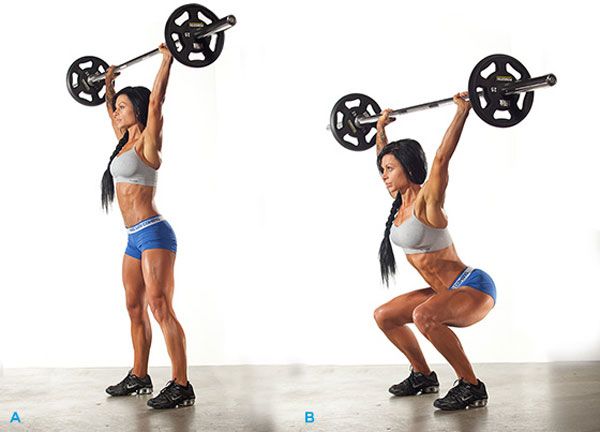
When you hold your weight over your head, the hardest part is to stabilize your body position while squatting. You can practice the skill by doing pause squats. It’ll make it easier to adapt, and you’ll feel more comfortable and confident.
As an option for pause squats, consider the following. Take a weight you can only do 3-4 reps with and reduce it by about 10-15%. Take a starting position, and then sit down as deep as possible. Maintain tension throughout your body. Count to 4 and stand up sharply. Do 4 sets of 5 reps. The technique may sound difficult, but once you master it, you can increase your explosive strength and improve your fitness.
The overhead squat is a very effective exercise that allows you to load multiple muscle groups simultaneously.



